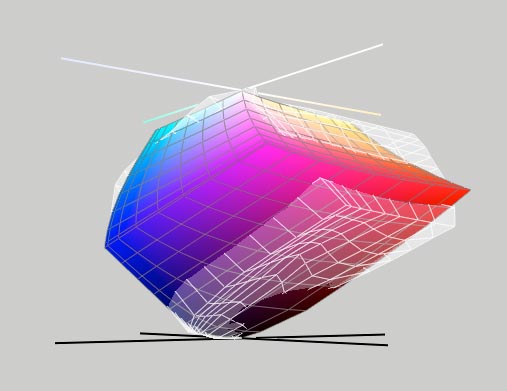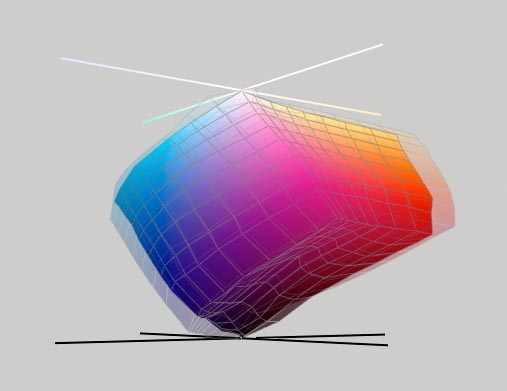Monitor and printer calibration
It is imperative that the monitor is calibrated so that one can see the images correctly. There is no point in taking efforts with any of the other calibrations if this has not been done. It would be best if the monitor had a bigger gamut (colour range) than the printer, so that all colours that can be printed can be seen. Unfortunately the only way to do this is to spend a lot of money on a monitor. The diagram below shows the volume of colours that can be displayed by the monitor as a coloured volume. This is measured by using the ES-1000s spectrophotometer on the monitor. The white grid shows the colours that can be printed on the hp 130 printer after calibration using the photometer. As can be seen the monitor does a reasonable job of covering all the printed colours. This diagram is a good argument for doing test prints, even with the calibrated system.

The printer can be used without custom calibration by using the colour profile supplied by Hewlett Packard, at least for HP papers. The benefits of doing a custom profile are that the profile should be more accurate as it uses the actual printer and paper being used to produce prints, not just an average estimated value, and that the gamut produced is larger for the custom calibration. i.e. the number and range of colours that can be printed is larger with the custom calibration. The diagram below shows the superimposed gamut's of the HP and custom profiles. The custom profile has a larger volume and extends better towards black implying better shadow detail and colour.

The above images were produced using the Apple "Colorsync utility"

